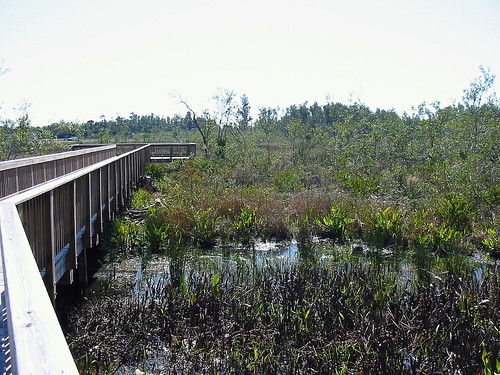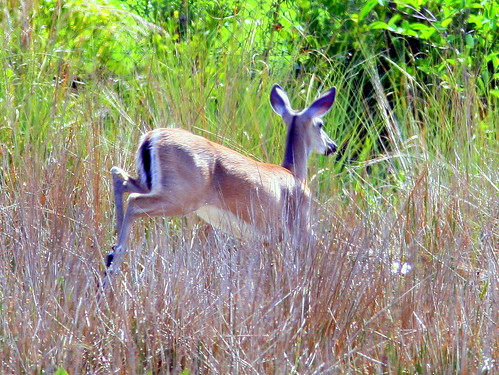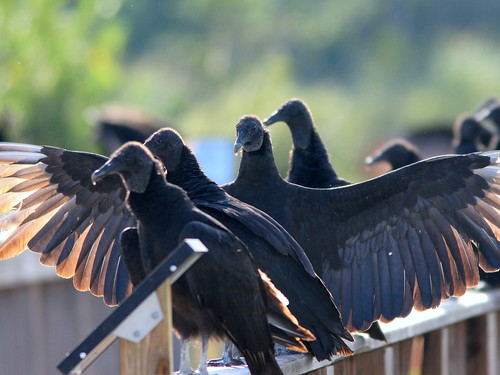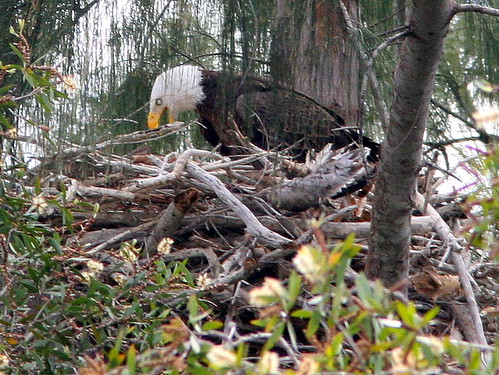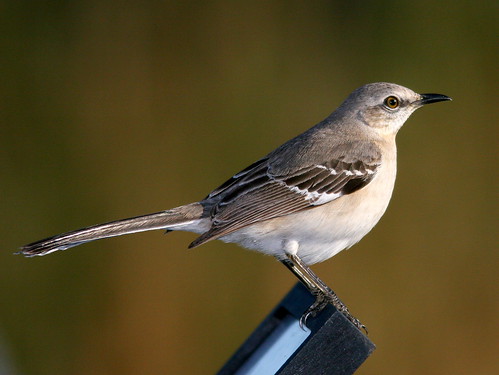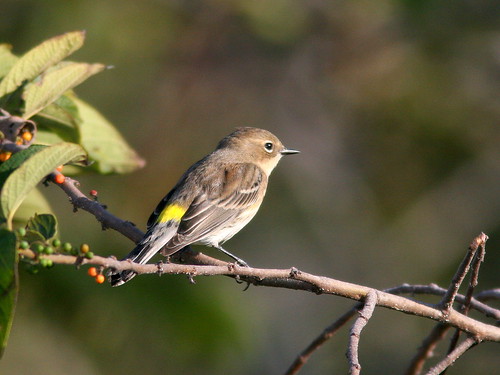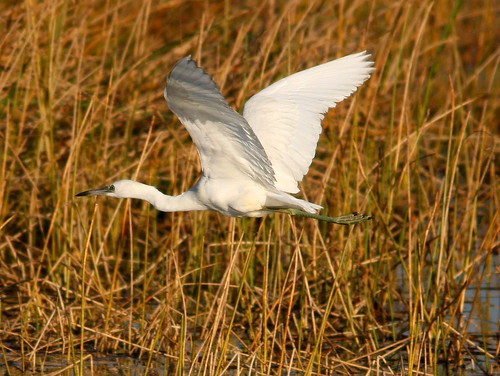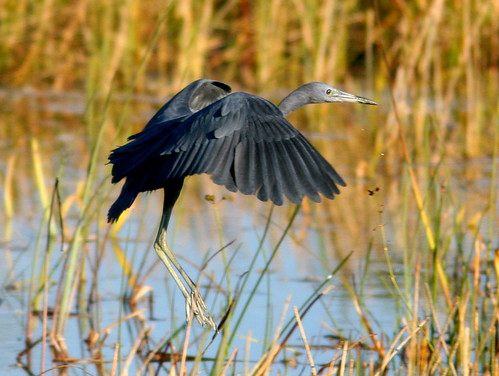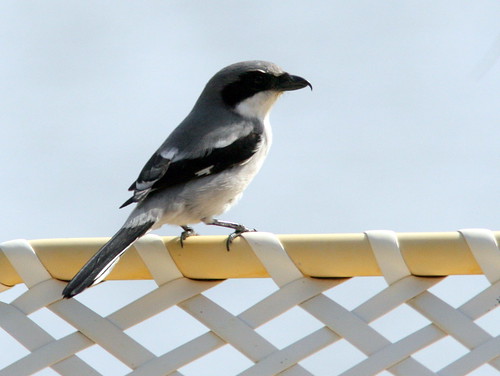Posted by: Ken @ 3:57 pm
“West Pines Soccer Park and Nature Preserve” sounds like a contradiction in terms, akin to “Joe’s Barber Shop and Fine Dining.” Located near our Florida home in neighboring Pembroke Pines, its extensive soccer fields share a border with a fragmented Water Conservation Area. Suburban housing nearly envelops the entire complex, yet it is an unexpected little patch of protected natural habitat.
The presence of cattails indicates that the water has been fertilized by agricultural and residential runoff. The native Sawgrass evolved in the nutrient-poor Everglades ecosystem, and it struggles to compete with invasive plants when the substrate is artificially enriched with phosphorus and nitrogen. The Water Conservation Area weakly imitates the historic Everglades hydrological cycle, swelling with rainwater during the summer and gradually drying out with the approach of winter.
A short boardwalk leads into the wetlands and one of two wildlife viewing platforms:
During past visits to this convenient oasis, we have been startled by deer, …
…surrounded by smelly vultures, …
…and dazzled by the beauty of a blooming Swamp Lily: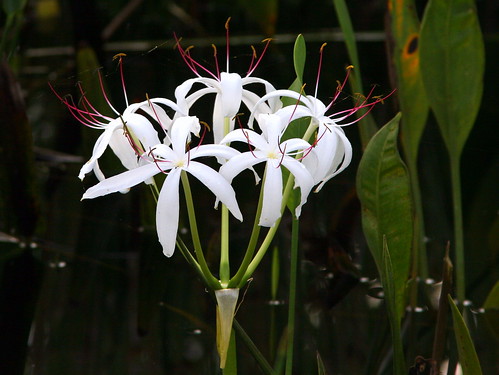
This photo of a Great Egret,”spoiled” when a Snowy Egret walked in front of my subject, turned out to be one of my favorites:
Christopher Cudworth, an Illinois neighbor, provided benchmarks that can help us evaluate and better appreciate our encounters with nature. You will enjoy reading his reflective essay, “Five Life Lessons You Can Learn from Birding (Birdwatching),” subtitled “Birding Can Be an Instrument of Learning, Joy and Humility.”
Each experience, whether in a faraway wild place or a back yard, teaches us one or more of these lessons:
Discovering a sense of wonder
Finding ways to share the joy
Maintaining a sense of humility
Building on your experience
Last week, we checked on the welfare of the incubating Bald Eagle near our home. When we arrived at the nest, it appeared empty, but we soon learned that an adult was sitting very low, incubating the eggs that had been deposited about a week before. Within minutes, the female flew in to exchange incubation duties.
The absence of spots on her tail distinguishes the female of this pair from the male:
The pair called to each other as the female made a pass in front of the nest tree. As soon as she landed on the rim of the nest, the male flew off. The female peered down into the nest, possibly rearranging nest materials or turning the eggs.
She then settled down to continue incubating:
Afterward, we stopped by the Soccer Park and Nature Preserve, just down the road from the eagle nest.
A Northern Mockingbird posed on an interpretive sign. A bird may not be rare or colorful, but can still be beautiful:
There were flocks of Yellow-rumped (Myrtle) Warblers:
A Red-bellied Woodpecker probed the recesses of a long-dead Melaleuca snag: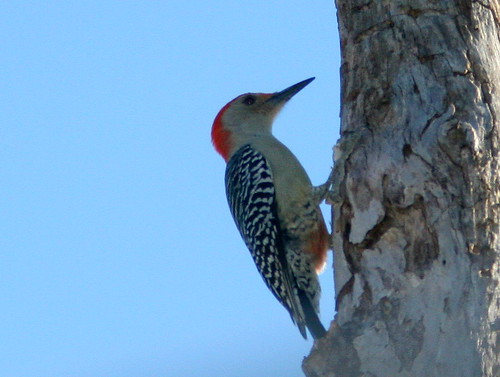
We witnessed an interesting inter-generational conflict between two Little Blue Herons. When we arrived at the observation platform, we saw a dark blue adult heron fishing peacefully in an area of shallow. open water.
An immature Little Blue Heron, distinguished from the egrets by its greenish legs and black-tipped gray bill, suddenly flew in and landed quite near the adult bird:
The adult Little Blue immediately moved over to chase it away:
The young bird held its ground as both spread their wings in an aggressive display: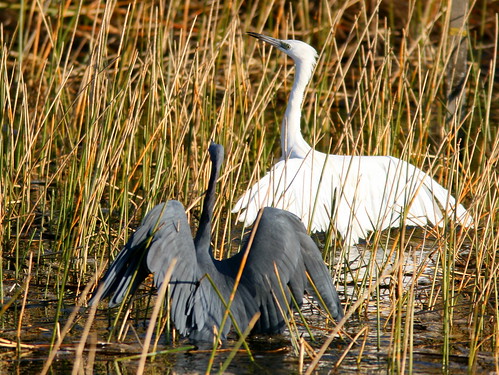
Finally, the adult made good on its threat, and chased after the younger white bird, eventually catching up with it and tussling in the grass:

Back home, I saw a Cattle Egret on our back patio and photographed it through the window glass: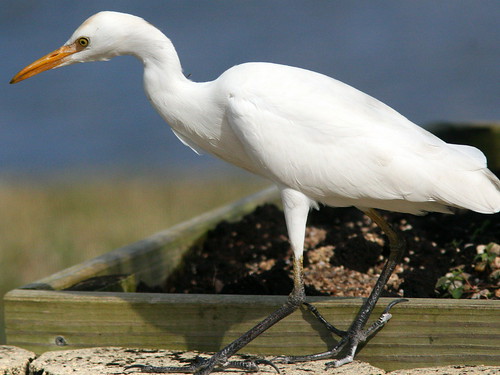
The egret was hunting for lizards hiding in the Aloe Vera: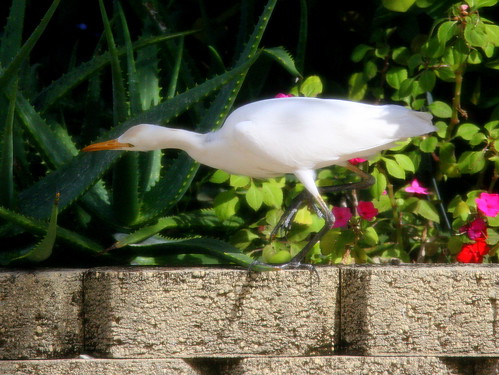
Later, a Loggerhead Shrike perched on a lawn chair on our back patio:
I captured this image from inside the house, as it too chased after anoles along the low wall: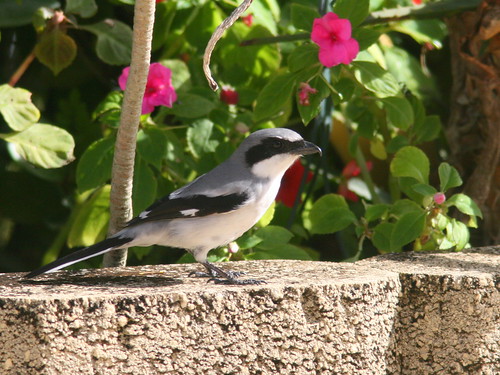
Click here for a slide show of some of the wildlife I have seen at the soccer park.













